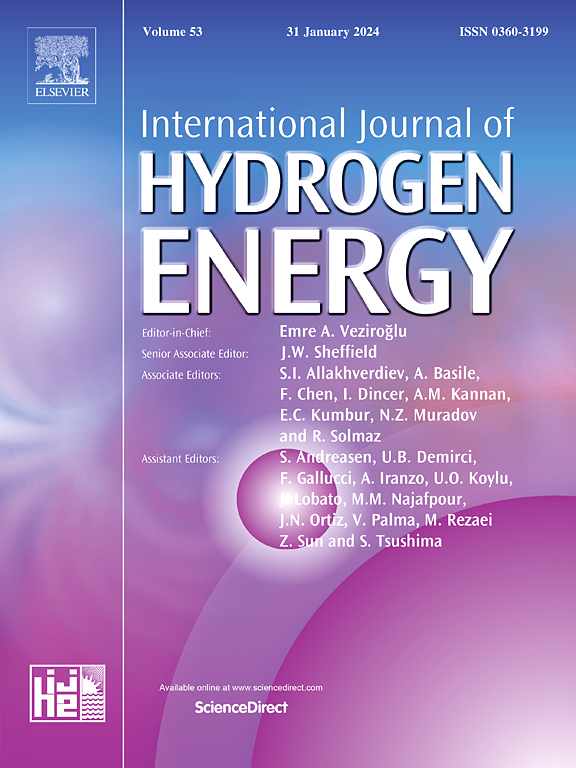Study on the mechanism for laminar burning velocity enhancement with ethane addition in ammonia premixed flames
IF 8.1
2区 工程技术
Q1 CHEMISTRY, PHYSICAL
引用次数: 0
Abstract
Ethane (C2) is the second largest component of natural gas, which exhibits superior combustion performance compared to methane (C1). The C2/NH3 dual-fuel combustion strategy effectively mitigates the shortcomings of NH3 flames. This study employed a spherical constant volume combustion chamber (CVCC) to measure the laminar burning velocity () of C2/NH3 across various equivalence () and blending ratios (). A chemical kinetics mechanism for C2/NH3 is developed and optimized based on experimental data and existing models (GRI 3.0, SanDiego, CEU 1.1), achieving high fidelity in simulating for binary fuel flames. The concept of flame precursor waves is refined by analyzing the roles of concentration, temperature, and chemical waves in flame propagation. Unlike the absolute leading position of concentration waves, chemical and temperature waves closely couple, creating a positive feedback mechanism. An equation of sensitivity analysis is established to examine the effects of fluid dynamics, thermal diffusion, and Arrhenius effects on . Thermal expansion coefficient () and laminar flame thickness () reflect fluid dynamic effects, with significantly influenced by . At low , NH3 dominates thermal diffusion, limiting and enhancing instability. The Arrhenius effect remains the primary factor, particularly significant at low , while C2 somewhat weakens the effects. Near the stoichiometric ratio, fluid dynamic effects become more pronounced, but excessive fluid density gradients inhibit flame propagation under rich fuel conditions. Nevertheless, the favorable thermal diffusion properties of C2 enhance the thermal diffusion effect, maintaining at a higher level.
求助全文
约1分钟内获得全文
求助全文
来源期刊

International Journal of Hydrogen Energy
工程技术-环境科学
CiteScore
13.50
自引率
25.00%
发文量
3502
审稿时长
60 days
期刊介绍:
The objective of the International Journal of Hydrogen Energy is to facilitate the exchange of new ideas, technological advancements, and research findings in the field of Hydrogen Energy among scientists and engineers worldwide. This journal showcases original research, both analytical and experimental, covering various aspects of Hydrogen Energy. These include production, storage, transmission, utilization, enabling technologies, environmental impact, economic considerations, and global perspectives on hydrogen and its carriers such as NH3, CH4, alcohols, etc.
The utilization aspect encompasses various methods such as thermochemical (combustion), photochemical, electrochemical (fuel cells), and nuclear conversion of hydrogen, hydrogen isotopes, and hydrogen carriers into thermal, mechanical, and electrical energies. The applications of these energies can be found in transportation (including aerospace), industrial, commercial, and residential sectors.
 求助内容:
求助内容: 应助结果提醒方式:
应助结果提醒方式:


